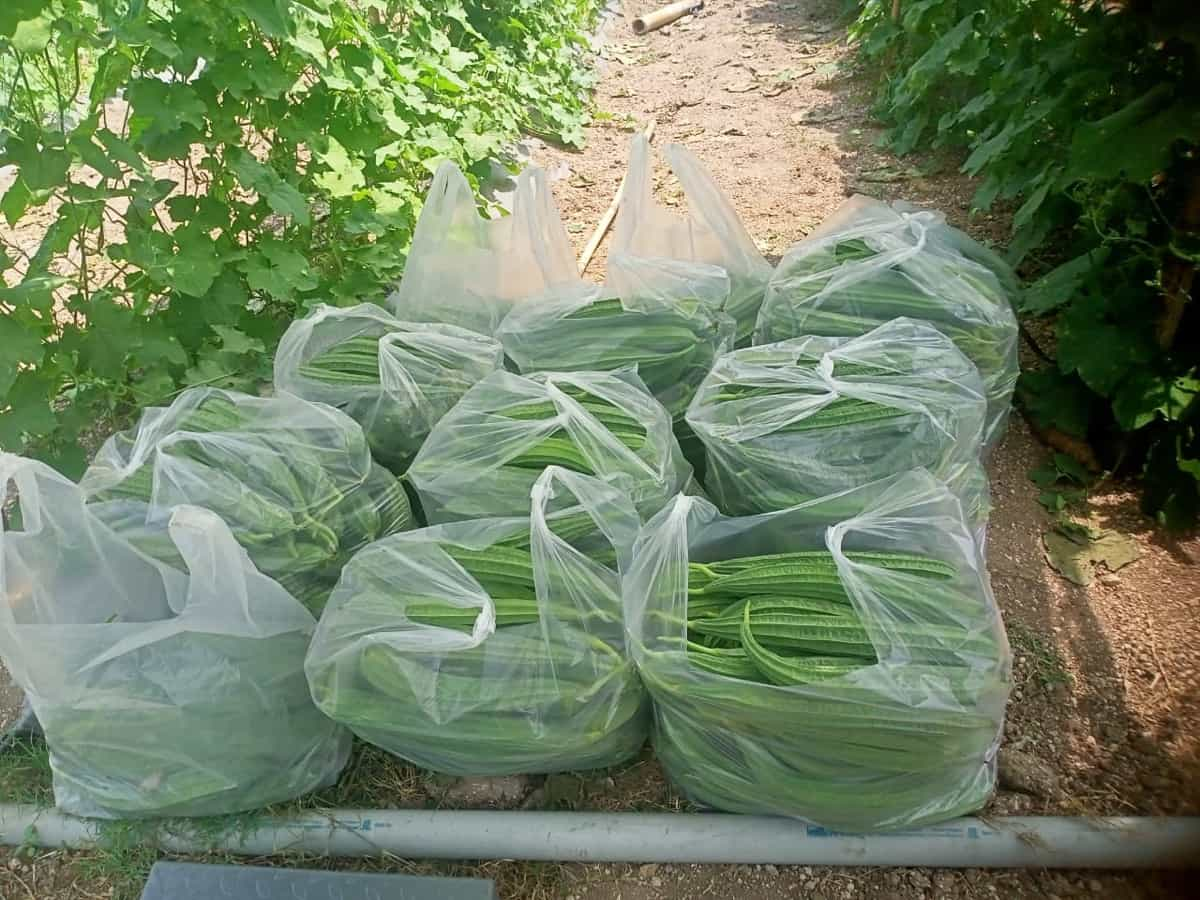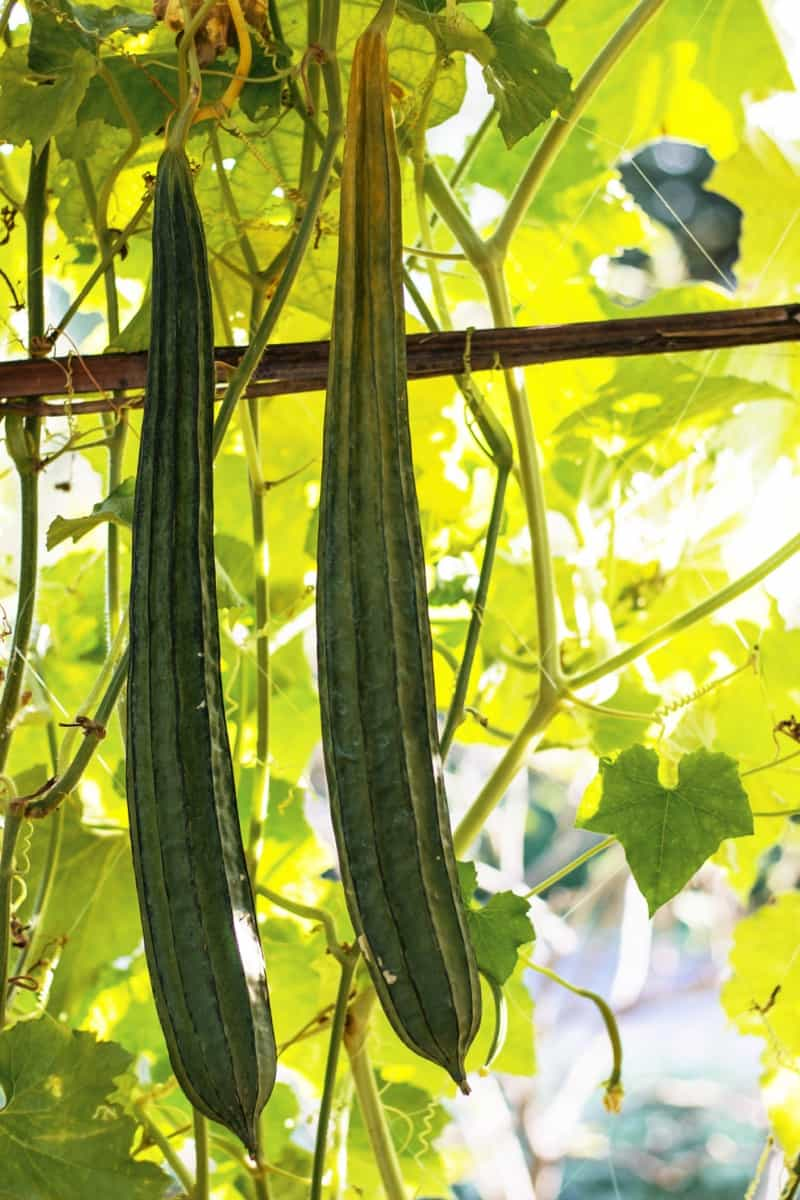The scientific name of the Ridge Gourd is Luffa acutangula (L.), belonging to the family Cucurbitaceae. Understanding its botanical characteristics can provide insights into optimizing growth conditions. Selecting high-yield varieties suited to your climate and soil type is crucial for maximizing productivity. Understanding the importance of boosting flowering and yield is crucial for maximizing your harvest.

Selecting High-Yield Ridge Gourd Varieties
Here are some high-yield Ridge Gourd varieties that you can consider planting in your garden. Each has unique characteristics that can contribute to a successful harvest.
- Arka Bahar: Known for its early maturity and uniform fruit size.
- Pusa Nasdar: A popular choice for its resistance to diseases and pests.
- Coimbatore Long Green: Produces long and slender fruits with excellent taste.
- Punjab Sadabahar: Ideal for warmer climates, producing high yields throughout the season.
Optimizing Soil Health and Fertility
To ensure optimal yields of your Ridge Gourds, pay close attention to the health and fertility of the soil they are planted in. Start by conducting a soil test to determine its pH levels, nutrient content, and overall quality. Based on the results, make necessary amendments, such as adding organic matter.
Applying cover crops into your gardening routine can help improve soil structure, prevent erosion, and provide additional nutrients as they decompose. Remember to rotate your crops regularly to avoid depleting specific nutrients from the soil and minimize disease build-up. Maintaining proper moisture levels is crucial for healthy plant growth.
Effective Watering Practices for Ridge Gourds
Ridge Gourds are thirsty plants that require consistent moisture throughout their growing season. Water your Ridge Gourds deeply but infrequently to encourage strong root development. It’s best to water them at the base of the plant, avoiding wetting the foliage, which can lead to disease issues. During hot weather or dry spells, increase watering frequency to prevent stress on the plants. Adjust your watering accordingly based on the specific needs of your Ridge Gourd plants.
Nutrient Management: Key Fertilizers for Flowering
Providing the right fertilizers at the right time can significantly enhance the plant’s overall health and productivity. Key fertilizers such as nitrogen, phosphorus, and potassium are essential for promoting robust flower development in Ridge Gourds. Nitrogen aids in leafy growth, phosphorus encourages root development, and potassium supports flower formation.
In case you missed it: Bloom Booster: Crafting the Perfect Homemade Bougainvillea Fertilizer

In addition to these primary nutrients, micronutrients like magnesium, calcium, and sulfur also play vital roles in ensuring optimal flowering conditions. Incorporating organic matter can enrich the soil with essential nutrients for healthy plant growth.
Pruning Techniques to Encourage Flowering
Pruning techniques play a crucial role in boosting the flowering of your Ridge Gourd plants. By removing excess foliage, you can redirect the plant’s energy towards flower production. Start by identifying any overcrowded or weak branches and snip them off with clean gardening shears.
Focus on pruning the lateral growth to promote better air circulation and sunlight exposure to the remaining healthy stems. This will help prevent diseases and encourage more robust flowering. Remember, less is more when it comes to pruning Ridge Gourds; avoid over-pruning as it may stress the plant. Regularly inspect your plants for any dead or diseased branches and promptly prune them to maintain overall plant health.
Training and Trellising for Improved Yield
By providing proper support and guidance for the vines to grow vertically, you can maximize space utilization and sunlight exposure. Trellising not only helps prevent diseases by improving air circulation but also makes it easier for pollinators to access the flowers, leading to a better fruit set. Training the vines along the trellis encourages them to focus their energy on producing more fruits rather than sprawling out horizontally.
In case you missed it: Effective Pollination Techniques for Maximizing Gourds Yield

Start trellising early in the growing season when the plants are still young and flexible. Use soft ties or twine to gently guide the vines upwards without causing damage. Regularly check and adjust the growth direction as needed throughout the season.
Pest and Disease Control for Healthy Plants
Common pests that can affect Ridge Gourd plants include aphids, whiteflies, and spider mites. If not properly controlled, these pests can weaken the plants and reduce their yield. Ridge Gourds are susceptible to many diseases, like powdery mildew, downy mildew, and fusarium wilt. If left unchecked, these diseases can quickly spread throughout the plant, affecting stunted growth and poor fruit development.
To keep your Ridge Gourd plants healthy, it’s important to regularly inspect them for any signs of pest infestations or disease outbreaks. Implementing IPM strategies, such as using beneficial insects or organic pesticides, can help control these issues effectively. By applying proactive measures to prevent pests and diseases from damaging your Ridge Gourd plants, you can ensure a bountiful harvest during the growing season.
Pollination Techniques for Better Fruit Set
Pollination plays an important role in the development of Ridge Gourds, leading to better fruit sets and higher yields. Bees are natural pollinators that help transfer pollen from male to female flowers, promoting successful fertilization. To attract more bees to the garden, consider planting nectar-rich flowers nearby or setting up bee-friendly habitats.
If you notice limited bee activity in your area, hand pollination can be a useful technique. Use a cotton swab to collect flower pollen from the male flowers and transfer pollen to the stigma of the female flowers. This manual method ensures efficient pollination and improves fruit formation. Consistent monitoring of flower development will help you identify the best time for optimal pollination results.
Regular Monitoring and Maintenance for Maximum Yield
Keep a close eye on your plants’ growth, checking for nutrient deficiencies or signs of pest infestation. Conduct inspections to catch any issues early and take corrective action promptly. Maintain optimal soil moisture levels by watering consistently and ensuring proper drainage to prevent waterlogging. Check the soil pH levels and adjust if necessary to create an ideal environment for your Ridge Gourds.
In case you missed it: How to Build Trellis for Gourds: A Step-by-Step Planting Guide for Beginners

Monitor the presence of pests and diseases by regularly inspecting the leaves, stems, and fruits. Implement IPM strategies to keep these threats at bay without harming beneficial insects. Prune any diseased parts of the plant to promote healthy growth and better fruit production. Increased flowering directly translates to higher fruit production, leading to greater yields. By adopting these strategies, you’ll be well on your way to boosting Ridge Gourd flowering and increasing overall productivity.
- Best Liquid Fertilizer for Flowering Plants
- How to Set Up an Efficient Watering System for Home Garden
- How to Mulch Tulip Bulbs: Expert Tips Best Tulip Blooms
- Common Problems with Potted Figs and How to Solve Them
- How to Prevent Flower Drops in Pomegranate Trees: Effective Tips
- How to Boost Ridge Gourd Flowering and Yield: A Beginner’s Guide
- Effective Pollination Techniques for Maximizing Gourds Yield
- Composting Techniques for Manure in Home Gardens
- A Step-by-Step Guide on Propagation Techniques for Jasmine Plants